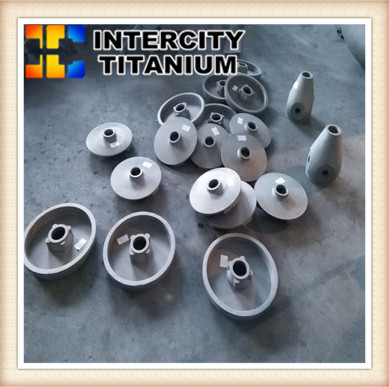Titanium alloy casting process
There are holes in the titanium casting, casting a meaningful impact on the strength of plasticity and fatigue strength. On the other hand, the microstructure of titanium castings is large. Because titanium castings are cooled down at high temperatures, especially the two-phase α + β alloy cast titanium castings, the brain is extremely large, seriously affecting the performance of titanium castings. To improve and enhance the performance of titanium castings to ensure the reliability of the use of titanium castings, the following processes can be used:
1, hot isostatic pressing
Hot isostatic pressing is a certain high temperature and pressure, so that defects within the casting diffusion welding, so that the coarse titanium in the organization to make improvements, to improve the plasticity and fatigue strength of titanium castings. Microstructure of ZT4 titanium alloy castings before and after hot isostatic pressing. Comparison of mechanical properties before and after hot isostatic pressing of titanium alloy castings. Because of this, in recent years, foreign countries have taken the hot isostatic pressing technology as an aerospace production of high-quality titanium alloy castings necessary processes. With the application of hot isostatic pressing in titanium alloy castings, it is required to further expand the range of application of titanium alloy castings in aerospace.
2, heat treatment
Altering the microstructure of the alloy by heat treatment has begun to notice in recent years. Although the microstructure of the two-phase titanium alloy castings is very stable over the temperature range of α + β, as long as the heating temperature approaches or exceeds the β-transformation temperature, β-solution treatment followed by medium-speed or Rapid cooling, or cyclic heat treatment, resulting in a low proportion of α phase, very small sheet α and sheet α clusters, or even to be basket-like organizations, thereby greatly improving the high-frequency fatigue properties of titanium alloy castings.
3, thermodynamical treatment
This is another process developed in recent years. Its basic principle is to dissolve about 3% of hydrogen in a titanium alloy casting to form a low-co-dissolution alloy with titanium, and then subjecting the titanium alloy casting to various heat treatments Kimono hydrogen role, resulting in a very small kind of as-cast microstructure with completely different organizations. Owing to the improvement of the internal structure of the titanium alloy castings, the tensile plasticity at room temperature is comparable to the deformation alloy. Therefore, it is a different process that has a great pioneering significance for cast titanium.
Fully convinced that with the in-depth development of a series of research work mentioned above, the ideal existing problems of titanium alloy casting technology will be solved and the production volume will increase rapidly. The usual range of titanium alloy casting products will be widespread All sectors of industry, especially the civilian industry.









